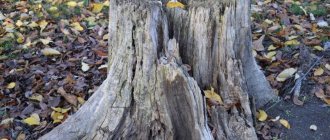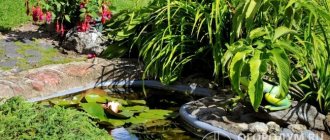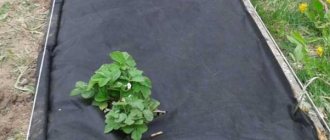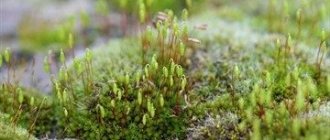Weeds are terrible annoying plants that not only spoil the appearance of beds and plants, but also exist at their expense. They feed on the nutrients and minerals that the planted plants need. That is why summer residents, even before the start of the season, are thinking about how to get rid of such annoying neighbors forever. It would seem that they grow like mushrooms after rain. However, there are many ways to get rid of weeds and make your own area look well-groomed and clean.
How to get rid of weeds on your property forever
Getting rid of weeds is an important and necessary procedure. This will not only greatly simplify subsequent work in the garden, but will also rid the remaining plants of unwanted companions. Their existence in the garden means one thing - the quality of the planted crops will noticeably decrease if the root of the ill-fated plant is not found and you do not get rid of it in time. Sometimes the root can extend far from the actual location of the weed, which is why there are several effective ways to combat these green crop pests in order to affect the root itself without harming good plants.
Biogard - new on the market
The new generation bioherbicide “Biogard” was created to combat more than 400 varieties of wild grasses. At the same time, the drug has a beneficial effect on fruit and vegetable crops, thanks to its universal formula. "Biogard" is available in the form of a small bottle of serum.
Application:
- Dilute 25 ml of whey with 3 liters of water;
- the finished liquid is enough to spray 12 m2 of land.
Pros:
- inexpensive;
- long shelf life;
- increases the immunity of cultural plantings;
- safe for animals, insects and humans.
Minuses:
- No.
Cost: 147 rubles per 100 ml.
Biological methods: safe and effective
The beauty of biological drugs is that they are harmless. All biological microorganisms have good efficiency, excellent price on the market, compared to other methods, and fast action.
Use of EM preparations in autumn
EM drugs are simply useful, effective microorganisms. They have been on the agricultural market for quite some time. Their effectiveness was proven by scientists back at the end of the twentieth century - the harvest is literally bursting with health and beauty, and it’s as if there were never weeds in the beds. You can use EM preparations in the fall so that the soil is clean and fresh at the time of planting.
The main thing is that this biological product is not stored in a cool place, but is kept warm. It is also important that EM preparations are diluted not with tap water, but with rainwater or even well water. This way, useful fertilizers will remain in their original form. Another important exception is that preparations with microorganisms are diluted only in plastic barrels, so that the contents do not mix with an iron or wooden barrel, which is unacceptable when used.
The proportion for killing weeds is as follows: 100 ml. drug per 10 liters of water. After this, the procedure follows: thoroughly dig up the soil, then spray the solution over the entire bed using a hose with a medium power level.
Spraying with saltpeter solution
Ammonium nitrate is a proven remedy that is effective in controlling pesky weeds. To prepare the solution, you need about 3 kilograms of dry fertilizer per bucket of water. The two ingredients are thoroughly mixed, then the weed area is generously watered with this mixture. The beauty of this method is that all the weeds will simply burn out from the ammonia effect, and everything that breaks down into microelements will become an excellent substance for feeding planted crops, since the saltpeter itself evaporates in about two days.
It is better to use saltpeter, which contains sulfur. Since sulfur, in its essence, is also a soil-friendly fertilizer for all plants. It is absolutely harmless to healthy seedlings, however, it is destructive to weeds.
Proper mulching: controlling weeds and increasing fertility
Mulching is not only the application of nutrients to the soil to improve the quality of plants, but also an excellent method for killing weeds. The only difference is the content. Anti-weed mulch should primarily consist of a mixture of organic and inorganic matter. As a rule, all weeds in the beds are annuals, as they are deposited in the soil by seed. And it is recommended to fight such green parasites in the following way: when planting plants, it is necessary to fill the soil with an admixture of elements:
- Fresh and dry leaves, tree bark;
- Straw;
- Seedless grass, necessarily only mown;
- Thick paper, organics, cardboard;
- Rotten sawdust;
- Lutrasil is a material that inhibits the spread and growth of weeds.
It is important when using the admixture not to sprinkle the soil too tightly, as this can inhibit the natural growth of healthy seedlings. You should add organic mulch a couple more times during the season to maintain the results. It is worth remembering that mulching is not a guarantee of preventing weed germination completely. However, it is effective in spreading such grass, and the number of weeds will also be noticeably reduced.
Sideration after harvest
Green manures are the orderlies of the beds. They are planted in the fall, when all the harvest has long been harvested and the land has been cleared. This method prevents weeds from getting into the soil, since beneficial plants protect it. Often, such orderlies are frost-resistant crops:
- Beans - beans, soybeans, lentils, vetch, firewood and others;
- Cereals - barley, millet, frost-resistant wheat or rye;
- Calendula;
- Buckwheat;
- Amaranth.
Green manure is a useful and inexpensive way to control weeds, which many summer residents like for its versatility. Green manures fight certain diseases, pathogenic bacteria and parasites, in addition to weeds. They also perfectly retain moisture remaining in the form of snow precipitation, which has a beneficial effect on soil fertility.
Compacted plantings in beds
A universal method of protecting against weeds in every sense is to plant plants tightly, but not end to end. Dense planting helps the soil maintain its pristine healthy appearance, since pesky noxious grasses cannot get through the strong system of roots and leaves. The only drawback of this method is that when cultivating the land - loosening, minor work on removing debris, it can be slightly inconvenient.
When using this method of protection against wild parasites, you should adhere to the principle of compatibility, because not all plants can get along well with each other in the same bed.
What can and cannot be compacted with what:
- Cucumbers with tomatoes or cabbage are excellent neighbors;
- Garlic with bell pepper, if you make a slightly increased distance between sowing garlic for a comfortable growing season of the pepper;
- Dill, parsley and spinach with carrots and potatoes;
- Spinach, at its core, is a fairly common sealer for many crops - zucchini, carrots, beets, garlic, eggplant, peppers.
- It is not recommended to compact legumes with zucchini and eggplant;
- It is forbidden to compact productive plants with flowers.
Traditional methods: fast and cheap
There are a huge number of time-tested folk remedies that help get rid of parasitic grass. Folk remedies are good because the consumer is confident in advance of their effectiveness, because they are used by all summer residents and gardeners very often.
How and where you can remove weeds with salt
Weed control with salt is carried out as follows. You can simply sprinkle a small amount of salt on small weeds in the form of dandelions or bindweed. In the process of oxygen exposure, it independently carries out reactions to destroy pests. For large grass you will have to make a few efforts:
- Grass (horsetail, burdock) should be pulled out or cut to the base, and then the remains should be dug up;
- In the place where the weed grows, dig a hole and pour a generous amount of salt into it, and then dig it in.
This method is necessary if the grass has already given off seeds in order to prevent their subsequent spread throughout the beds.
You can treat weedy areas with a salt solution. It requires 9% acetic acid, water and salt. Water and vinegar are mixed in a 3:1 ratio. Then a level tablespoon of salt is added to the solution. After this, the contents are poured into a watering can and the area with pests is generously watered with this solution.
Soda in the fight against weeds
A solution of baking soda also does an excellent job of killing harmful grass. It is better to use baking soda, since soda ash can harm the soil with its composition. Under no circumstances should you water productive plants, so as not to destroy them. Only weeds are watered with the solution. For a concentrated solution you only need 5 tablespoons of soda and a liter of water. It is very important to administer the solution pointwise:
- On mosses - with a painting brush or by hand through gloves;
- Into the soil - through the hole of the syringe;
- Vertical weeds - through a spray bottle.
If you add not five spoons to the solution, but two and a half, then you can safely spill it on the ground under the grass and a little nearby. It is important not to enter the territory of healthy plants, otherwise you can destroy the crop. The procedure is repeated twice a day - in the morning and in the evening, provided that the weather outside is dry and warm. The duration of such a ritual is several days. If necessary, you can repeat it in a month, but not earlier.
How to use vinegar correctly
Vinegar is used only on soil that has low or neutral acidity. Acetic acid solution should not be used in already acidic soil. For a concentrated solution - a weapon against annoying grass, you will need: a bottle of vinegar (180 ml.) with an acid content of 70% and two liters of water. The parts are mixed together and the weed beds are shed with this mixture. It is not recommended to use this method on seedlings or newly transplanted plants. Since their root system has not yet strengthened and may die from such acid.
How to Make and Use Herbicide Soap
Herbicidal soap is an independent inorganic weapon, created entirely from folk remedies. For soap you will need: a liter of acetic acid (from 15 to 20%), 150 grams of coarse salt, 100 grams of laundry soap, grated on a coarse grater. The ingredients are mixed and shaken until smooth. It is ideal to use this method as a spray - simply spray the weed, its stems and lightly sprinkle the soil underneath it several times. If necessary, the procedure is repeated 3-5 times, but not more often, since pests, as a rule, die quickly.
How is alcohol used?
Weed leaves are often treated with undiluted alcohol - this makes them vulnerable to burning ultraviolet rays. They stop photosynthesizing and simply dry out under the scorching sun. It is important to apply carefully - with a small brush or cotton wool soaked in alcohol. You should not fall into the crop, since it has exactly the same principle of existence as any other plant.
Boiling water against weeds
Boiling water is the simplest and most accessible remedy for the terrible and nasty weeds. For this method, just pour freshly boiled water over the top of the annoying plant. It will begin to shrink and gradually die. Weeds are a fairly decent plant in height, so there is a chance that a new one will grow in place of a dead weed. Then the procedure can be repeated again and consolidate the result of boiling water in action.
Didn't have time to grow weeds?
If you didn’t have time to do this, you arrived at the site, and all the vegetable beds are already covered with a green carpet of weeds, then take the Strizh weeder or the Fokina flat cutter - and go ahead!
It is necessary to cut off all the weeds from the surface of the beds, going 4–5 cm deep into the soil, and leave them to lie on the bed for a day. After this, make furrows, water them well (preferably from a kettle), “salt” the planting furrows with the dust fraction of the wonderful AVA fertilizer and sow the seeds of vegetables and herbs. Lightly level the soil of the crops. Compact with a board, cover the beds with old film and secure it. Until germination, the film will retain moisture and heat in the soil. Naturally, as soon as the shoots have appeared, the film must be removed and the rows must be loosened to destroy the weed seedlings. Weeds can be left directly in the garden bed if the weather is dry.
If you sow long-growing crops (carrots, dill, parsley), then weed seedlings may appear earlier than your crops, and while loosening the weeds, you may accidentally enter the rows of crops. In such cases, among the seeds of crops that take a long time to germinate, it is necessary to sow several seeds of a lighthouse crop, which germinate quickly, distributing the seeds throughout the entire row. Radishes, lettuce and spinach sprout quickly. They mark the rows of crops.
Before the seedlings appear, the beds cannot be watered, since the hatched root is already oriented towards the center of the Earth, and a stream of water can turn it over and the seed will die. In addition, a stream of water can wash the seeds into the hollows, and they will sprout “where it’s thick and where it’s empty.” If the weather is dry and especially windy, the top layer of soil dries out and the swollen seeds simply dry out in this layer. There are no shoots, and gardeners are guilty of poor seed quality.
Transparent film protects crops from this, but another danger awaits them. In hot weather, the seedlings can get stuck under the film, and therefore, as soon as they appear, the film must be removed and replaced with white lutrasil.
The crops can be immediately covered with lutrasil rather than with film, but then in dry and hot weather the crops will have to be watered directly over the lutrasil. Lutrasil will not allow a stream of water to damage the seedlings, as happens with direct watering on the soil from a watering can. It is better to water in the evening so that the water saturates the soil overnight and does not evaporate from its surface.
When covering with lutrasil, you need to give some slack so that the plants growing under it have some freedom. Lutrasil can be removed when not only the threat of night frosts has completely passed, but also the spring flight of pests during the flowering of cherries and lilacs.
Mechanical methods of weed control
Weed extermination also occurs mechanically, using improvised means or tools. The only important thing is a timely response so that the weed does not have time to take deep roots into the soil.
Annual digging of beds and row spacings
Digging beds is a common method for ridding an area of weeds. It is carried out twice a year: in autumn and spring before planting. For digging, you can use tools - a fork or a shovel, or you can use modern technological means - a walk-behind tractor and a cultivator.
The latter will simply expose the root system of the pests, and then crush them into small pieces. If the weed is large and has a thick, almost woody root, it is recommended to remove it manually using garden shears and a saw. It is recommended to dig deep enough, as the pest likes to root deep into the soil.
Soil freezing
After the end of the harvest season, the land on the site is usually plowed. With this action, it is necessary to pay special attention to the roots of the weeds: they should be left on the surface of the soil after arable work. So, in winter, the root system will freeze and die. This method is perfect for climate areas where severe frosty winters with little snow are prevalent.
Timely weeding and root removal
This method is characterized by attentiveness and vigilance for weeds. As soon as the first candidate for destruction appears on the horizon, the land is weeded by hand. So as not to touch the base of productive plants. After which the root of the pest is carefully removed from the ground, if necessary, pryed with a pitchfork or trimmed for easy removal. And then it is disposed of in compost or to start a fire.
An ordinary garden hoe is also suitable for this method. After all, if the weed was noticed promptly at the growth stage, its roots had not yet had time to form and strengthen on healthy and fertile soil. If the area of the plot allows, mechanical weeding can also be carried out. This method will take much less effort and time, and the result will be no worse.
Depletion of weeds by constant pruning
The depletion of weeds occurs in two seasons: autumn, the so-called autumn season, and spring, pre-sowing season. The method is also relevant during soil cultivation. After plowing, harmful grass should be trimmed several times at equal intervals. Due to pruning, it will require more effort and nutrients that will be difficult to obtain since the plant is pruned. Such a vicious circle leads to the fact that the annoying plant simply dies from exhaustion, and at the same time, its roots die.
Motoblock to help you
If we are talking about eliminating weeds over a fairly large area, where the same crop (say, potatoes) is planted every year and nothing else grows, then solve the problem as follows: regularly plow and loosen the soil using a walk-behind tractor, cultivator or mini -tractor. Then in a few years you will eliminate even those weeds whose roots are deep in the ground and difficult to dig out with a shovel, such as burdock, horse sorrel or wormwood. However, after such treatment, some weeds (wheatgrass, sowweed or dandelions) will only benefit. The crushed pieces of rhizomes will germinate, and there will be many more weeds. In general, it is much more difficult to control weeds in densely planted flower beds, beds or alpine hills.
Compost or garden bed? Where to put tops, weeds and carrion More details
The fastest chemical methods
When there is not enough time and energy for traditional or mechanical methods to destroy weeds, ready-made chemicals come to the rescue. They are sold in specialized country or garden stores. Everyone has a different cost, varying from the composition and subsequent effectiveness in action. Basically, all products have one similarity - they are classified as herbicides. These are those drugs that are aimed at independently destroying unwanted plants.
Safe ways to use chemicals
Pesky plants not only spoil the appearance of beds or row spacing, but also seriously interfere with the natural growth process of productive plants. To prevent these parasites from colonizing the area, it is recommended to use chemicals that are absolutely safe for humans and healthy plants. The best safe products that can be used without fear of harm:
1. Hurricane Forte. Its action is aimed at destroying almost all types of weed - from dandelion to wheatgrass. And the main advantage of this product is that it is absolutely non-caustic and does not have any unpleasant fragrance. The breakdown of its constituent substances in the soil will feed healthy plants and improve their growing season;
2. Amisol. Another universal herbicide that completely dissolves in the soil environment. Absolutely harmless to plants. However, it has a rather significant disadvantage - it is used in weather conditions from 15 to 20 degrees Celsius, otherwise it will react slowly and almost imperceptibly. Mainly used in corn or grain fields;
3. Roundup. Multilateral herbicide that destroys up to 80% of weeds of any type (annual, perennial). Used a week before spring sowing. It has a small toxic fragrance, harmless to humans and plants, but destructive to weeds. The only drawback is the high cost, which is compensated by the ideal result - all the weeds will die.
4. Titus. An effective and relatively inexpensive chemical agent for the destruction of harmful grass. Used on soils with any moisture level. Quickly absorbed. However, before the first results you will have to resort to Titus for about 2 weeks. The only disadvantage of this product is that it is ineffective in the fight against weeds.
Prevention against the spread of weeds
To prevent the causes of weeds, rather than deal with the consequences, there are a number of preventive measures that need to be considered. These measures are relevant for the entire harvest season, including late autumn:
- Harvest the crop in a timely and high-quality manner, without leaving rot and debris on the soil surface;
- Cleaning and preventing the spread of weeds by chemical action before sowing;
- Control of irrigation and irrigation water. The water must be suitable for irrigation, it must not contain pathogenic bacteria and weed seeds;
- Timely mowing of weeds and weeding the ground from them.
Making a path between the beds
In order not to lay covering materials on the paths, you can fill them with sand. This method is good because you don’t have to constantly remove weeds, and water won’t accumulate on the surface.
But areas covered in this way will have to be fenced off on all sides. Otherwise, grains of sand will be spread throughout the garden.
To fill paths with sand, you must first prepare a fence
Instead of sand you can use:
- small chips;
- sawdust;
- shavings.
In any case, you will need a fence. Over time, this coating can even become a natural fertilizer.
Fine stone or crushed stone is a more advanced way to refine paths. They will always look neat and clean.
But before backfilling, you need to cover the soil with geotextile so that it does not mix with stones. The non-woven material must have an impressive thickness so that it is not damaged by sharp edges.
It is necessary to lay a lining layer between the soil and crushed stone
Read on our website: ideas for garden beds made from pallets.
Mown grass between the beds will aesthetically complement the paths and act as mulch. To prevent the layer from transmitting sunlight, it must be 5 cm thick or more.
Lawn grass between the beds is not the best solution. Weeds constantly sprout in it, spoiling the view, and there is nowhere to put the cut grass.
For ideas on garden paths made from scrap materials, see the link.











